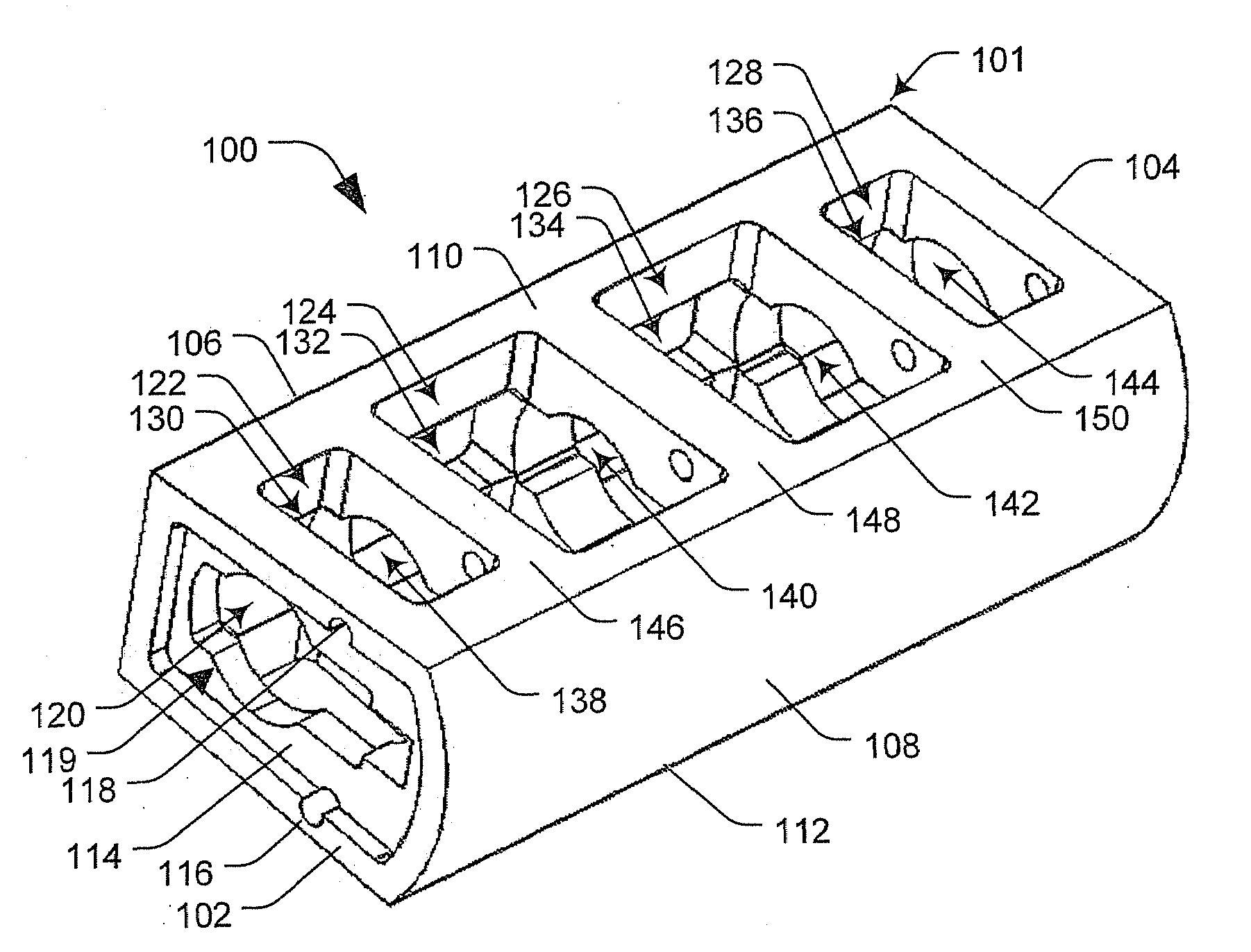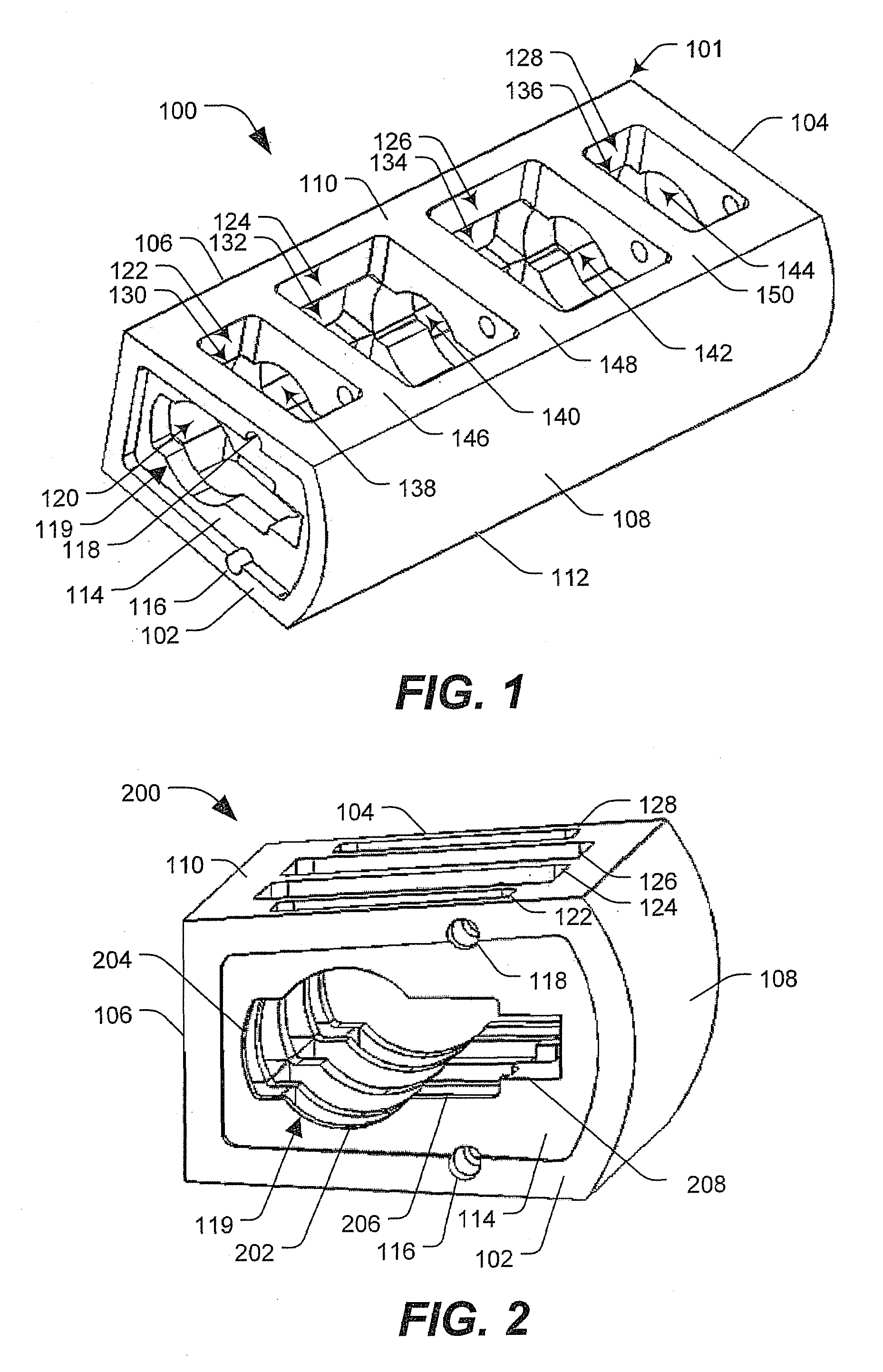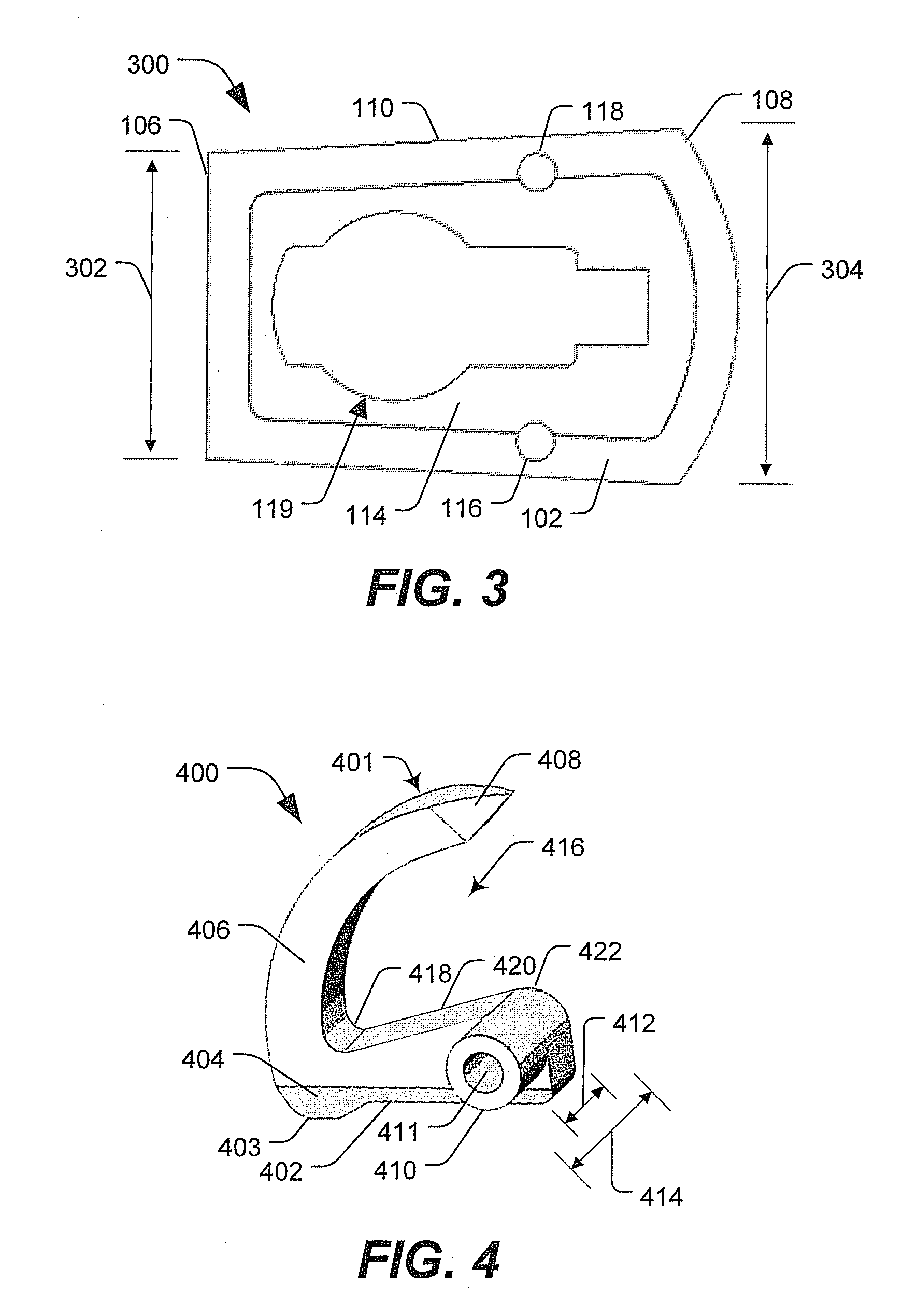Minimally invasive lateral intervertbral fixation system, device and method
a technology of lateral intervertebral fixation and lateral intervertebral bone, which is applied in the field of minimally invasive lateral intervertebral fixation system, device and method, can solve the problems of frequent deterioration, loss of normal consistency and volume of the spinal disk, and becoming a source of pain
- Summary
- Abstract
- Description
- Claims
- Application Information
AI Technical Summary
Benefits of technology
Problems solved by technology
Method used
Image
Examples
first embodiment
[0035]FIG. 7 is a perspective view 700 of a minimally invasive lateral intervertebral system 701. The minimally invasive lateral intervertebral system 701 includes an example wedge 702 and an example cylindrical key 704 to interface with the example shell 101 and the example plural anchors 602-616. The wedge 702 and cylindrical key 704 are used to rotate the respective sets of anchors (602, 610), (604, 612), (606, 614), and (608, 616), in order from the proximal to the distal, from a concealed position within the shell 101 into an extended and fixed position in relation to the shell 101 (shown in FIG. 11) to engage and secure endplates of respective vertebrae (not shown). For example, the wedge 702 is advanced forward (e.g., via portions 206 and 208 of the keyway 119) to rotate a first proximal set of anchors (602, 610) from the concealed position within the shell 101 to an intermediately rotated position in which the base portions of the set of anchors (e.g., base portion 402 of FI...
second embodiment
[0037]FIG. 9 is a perspective view of a minimally invasive lateral intervertebral system 900. The minimally invasive lateral intervertebral system 900 includes an example introducer 901, the shell 101 with plural anchors 602-616, the wedge 702, the cylindrical key 704 (shown in FIG. 10) and an extender / connector 907. The introducer 901 interfaces with the shell 101 and the cylindrical key 704 to deliver and implant the shell 101, the plural anchors 602-616 and the cylindrical key 704 (e.g., the minimally invasive lateral intervertebral fixation device) into a disk space between plural vertebrae.
[0038]The introducer 901 is made of a rigid radiolucent material, such as a radiolucent metal. In various embodiments, the radiolucent metal may be aluminum, beryllium or other radiolucent metal. In a particular embodiment, the introducer 901 is approximately 20 cm long and has a hollow configuration that approximates the shell 101 shown in FIG. 1. The introducer includes a mating protrusion ...
PUM
 Login to View More
Login to View More Abstract
Description
Claims
Application Information
 Login to View More
Login to View More - R&D
- Intellectual Property
- Life Sciences
- Materials
- Tech Scout
- Unparalleled Data Quality
- Higher Quality Content
- 60% Fewer Hallucinations
Browse by: Latest US Patents, China's latest patents, Technical Efficacy Thesaurus, Application Domain, Technology Topic, Popular Technical Reports.
© 2025 PatSnap. All rights reserved.Legal|Privacy policy|Modern Slavery Act Transparency Statement|Sitemap|About US| Contact US: help@patsnap.com



